Liproxstatin-1
Synonym(s):N-[(3-chlorophenyl)methyl]spiro[4H-quinoxaline-3,4′-piperidine]-2-amine;N-[(3-Chlorophenyl)methyl]-spiro[piperidine-4,2′(1′H)-quinoxalin]-3′-amine
- CAS NO.:950455-15-9
- Empirical Formula: C19H21ClN4
- Molecular Weight: 340.85
- MDL number: MFCD14948691
- Update Date: 2024-11-19 23:02:33

What is Liproxstatin-1?
Description
Liproxstatin-1 is a ferroptosis inhibitor. It inhibits ferroptotic cell death (IC50 = 22 nM) and lipid peroxidation in mouse embryonic fibroblasts (MEFs) with an inducible knockdown of glutathione peroxidase 4 (Gpx4-/- MEFs) when used at a concentration of 50 nM. Liproxstatin-1 also inhibits ferroptosis induced by the ferroptosis-inducing agents L-buthionine sulphoximine (BSO), erastin , and (1S,3R)-RSL3 in a concentration-dependent manner in MEFs, but does not inhibit necroptosis, apoptosis, or necrosis. It inhibits cell death and lipid peroxidation induced by (1S,3R)-RSL3 in human renal proximal tubule epithelial cells. Liproxstatin-1 (10 mg/kg) increases survival and decreases TUNEL+ kidney cells in inducible Gpx4-/- mice and reduces tissue injury in a mouse model of hepatic ischemia/reperfusion injury. It is also an antioxidant that inhibits autooxidation of lipids by trapping peroxyl radicals.
The Uses of Liproxstatin-1
Liproxstatin-1 has been used as a cell death inhibitor in the cell viability assay and for the determination of lipid peroxidation.
Definition
ChEBI: Liproxstatin-1 is an azaspiro compound that is 1'H-spiro[piperidine-4,2'-quinoxaline] in which the hydrogen at position 3' is replaced by a (3-chlorobenzyl)amino group. It is a potent inhibitor of ferroptosis. It has a role as a ferroptosis inhibitor, a radical scavenger, an antioxidant and a cardioprotective agent. It is a member of monochlorobenzenes, a secondary amino compound, an azaspiro compound and an organic heterotricyclic compound.
Biochem/physiol Actions
Liproxstatin-1 is a potent inhibitor of ferroptosis, a non-apoptotic form of cell death characterized by iron-dependent accumulation of lethal lipid reactive oxygen species (ROS). Liproxstatin-1 suppressed ferroptosis in human cells and in an ischaemia/reperfusion-induced tissue injury model in mice. Knockout of glutathione peroxidase 4 (Gpx4) Has been shown to cause cell death by ferroptosis. Liproxstatin-1 was able to suppress ferroptosis in Gpx4 knock-out mice.
References
Angeli et al. (2014), Inactivation of the ferroptosis regulator Gpx4 triggers acute renal failure in mice; Nat. Chem. Biol. 16 1180 Feng et al. (2019), Liproxstatin-1 protects the mouse myocardium against ischemia/reperfusion injury by decreasing VDAC1 levels and restoring GPX4 levels; Biochem. Biophys. Res. Commun. 520 606 Zilka et al. (2017), On the mechanism of Cytoprotection by Ferrostatin-1 and Liproxstatin-1 and the Role of Lipid Peroxidation in Ferroptotic Cell Death; ACS Cent. Sci. 3 232
Properties of Liproxstatin-1
| Boiling point: | 581.4±50.0 °C(Predicted) |
| Density | 1.32±0.1 g/cm3(Predicted) |
| storage temp. | -20°C |
| solubility | Soluble in DMSO (15 mg/ml) |
| form | powder |
| pka | 9.45±0.40(Predicted) |
| color | white to light brown |
| Stability: | Stable for 1 year from date of purchase as supplied. Solutions in DMSO may be stored at -20°C for up to 2 month. |
Safety information for Liproxstatin-1
| Signal word | Warning |
| Pictogram(s) |
 Exclamation Mark Irritant GHS07 |
| GHS Hazard Statements |
H302:Acute toxicity,oral H315:Skin corrosion/irritation H319:Serious eye damage/eye irritation H335:Specific target organ toxicity, single exposure;Respiratory tract irritation |
| Precautionary Statement Codes |
P261:Avoid breathing dust/fume/gas/mist/vapours/spray. P264:Wash hands thoroughly after handling. P264:Wash skin thouroughly after handling. P270:Do not eat, drink or smoke when using this product. P271:Use only outdoors or in a well-ventilated area. P280:Wear protective gloves/protective clothing/eye protection/face protection. P330:Rinse mouth. P362:Take off contaminated clothing and wash before reuse. P301+P312:IF SWALLOWED: call a POISON CENTER or doctor/physician IF you feel unwell. P302+P352:IF ON SKIN: wash with plenty of soap and water. P304+P340:IF INHALED: Remove victim to fresh air and Keep at rest in a position comfortable for breathing. P305+P351+P338:IF IN EYES: Rinse cautiously with water for several minutes. Remove contact lenses, if present and easy to do. Continuerinsing. P332+P313:IF SKIN irritation occurs: Get medical advice/attention. P337+P313:IF eye irritation persists: Get medical advice/attention. P405:Store locked up. P403+P233:Store in a well-ventilated place. Keep container tightly closed. P501:Dispose of contents/container to..… |
Computed Descriptors for Liproxstatin-1
New Products
4-AMINO-TETRAHYDRO-PYRAN-4-CARBOXYLIC ACID HCL 4-(Dimethylamino)tetrahydro-2H-pyran-4-carbonitrile 4-AMINO-TETRAHYDRO-PYRAN-4-CARBOXYLIC ACID 4-Aminotetrahydropyran-4-carbonitrile Hydrochloride (R)-3-Aminobutanenitrile Hydrochloride 5-Bromo-2-nitropyridine Nimesulide BP Aceclofenac IP/BP/EP Diclofenac Sodium IP/BP/EP/USP Mefenamic Acid IP/BP/EP/USP Ornidazole IP Diclofenac Potassium 3-Bromopyrazole (3aR,4R,5R,6aS)-hexahydro-5-Triethyl silyloxy-4-((E)-3-oxo-5-phenylpent-1- enyl)cyclopenta[b]furan-2-one. 1-Chlorocarbonyl-4-piperidinopiperidine 1-Bromo-4-phenyl-2-Butanone 4-Amino-2-fluoro-N-methylbenzamide 1,1'-Carbonyldiimidazole SODIUM AAS SOLUTION ZINC AAS SOLUTION BUFFER SOLUTION PH 10.0(BORATE) GOOCH CRUCIBLE SINTERED AQUANIL 5 BERYLLIUM AAS SOLUTIONRelated products of tetrahydrofuran

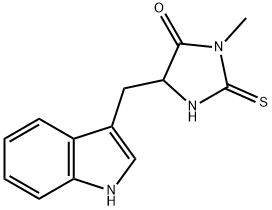
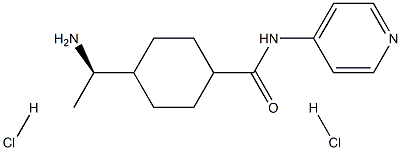
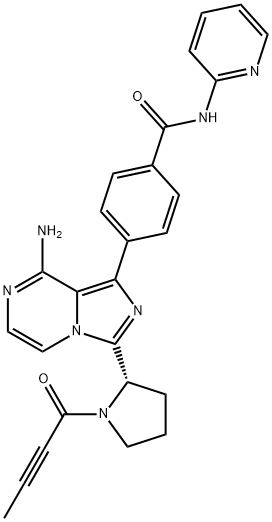
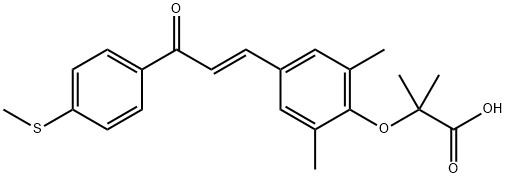
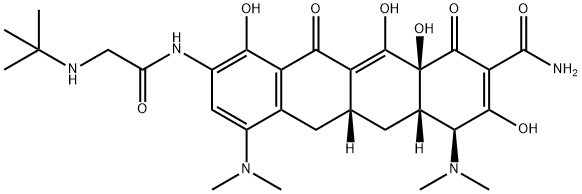
![3-[(Aminocarbonyl)amino]-5-(3-fluorophenyl)-N-(3S)-3-piperidinyl-2-Thiophenecarboxamide](https://img.chemicalbook.in/CAS/GIF/860352-01-8.gif)
You may like
-
 Liproxstatin-1 CAS 950455-15-9View Details
Liproxstatin-1 CAS 950455-15-9View Details
950455-15-9 -
![Dimethyl [2-oxo-3-[3-(trifluoromethyl)phenoxy]propyl]phosphonate 99%](https://img.chemicalbook.in//Content/image/CP5.jpg) Dimethyl [2-oxo-3-[3-(trifluoromethyl)phenoxy]propyl]phosphonate 99%View Details
Dimethyl [2-oxo-3-[3-(trifluoromethyl)phenoxy]propyl]phosphonate 99%View Details
54094-19-8 -
 85-81-4 99%View Details
85-81-4 99%View Details
85-81-4 -
![208111-98-2 (3aR,4R,5R,6aS)-5-(Benzoyloxy)hexahydro-4-[(1E)-3-oxo-4-[3-(trifluoromethyl)phenoxy]-1-buten- 1-yl]-2H-cyclopenta[b]furan-2-one 99%](https://img.chemicalbook.in//Content/image/CP5.jpg) 208111-98-2 (3aR,4R,5R,6aS)-5-(Benzoyloxy)hexahydro-4-[(1E)-3-oxo-4-[3-(trifluoromethyl)phenoxy]-1-buten- 1-yl]-2H-cyclopenta[b]furan-2-one 99%View Details
208111-98-2 (3aR,4R,5R,6aS)-5-(Benzoyloxy)hexahydro-4-[(1E)-3-oxo-4-[3-(trifluoromethyl)phenoxy]-1-buten- 1-yl]-2H-cyclopenta[b]furan-2-one 99%View Details
208111-98-2 -
 2033-24-1 99%View Details
2033-24-1 99%View Details
2033-24-1 -
 Meldrums acid 2033-24-1 99%View Details
Meldrums acid 2033-24-1 99%View Details
2033-24-1 -
 Cyaclopentane carboxylic acid 99%View Details
Cyaclopentane carboxylic acid 99%View Details
3400-45-1 -
 2-Aminopyridine 504-29-0 99%View Details
2-Aminopyridine 504-29-0 99%View Details
504-29-0